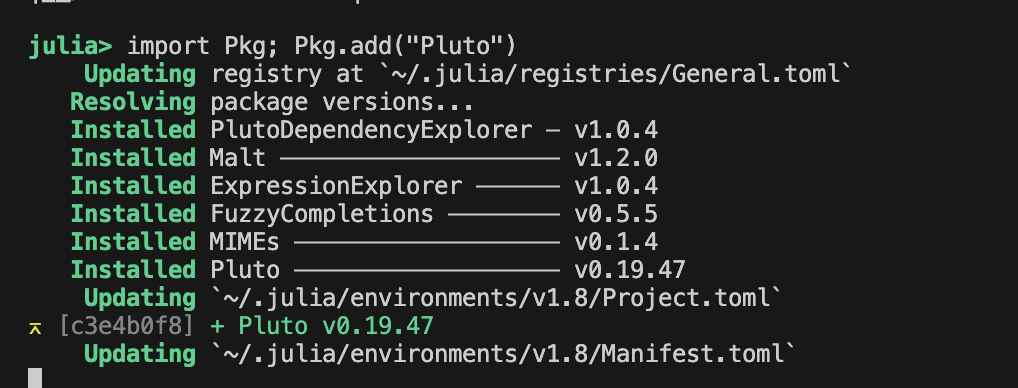Workshop on Differentiable Marine Hydrodynamics Simulations and its Applications using MarineHydro.jl
“Bringing the power of gradient-based optimization to the marine energy sector”
Abstract
Understanding and predicting wave-structure interactions is central to the design and operation of offshore systems—from floating wind turbines and wave energy converters to autonomous marine platforms. Traditionally, these interactions are modeled using boundary element method (BEM) solvers based on linear potential flow theory. However, a major limitation of existing BEM solvers is their inability to provide sensitivities (derivatives) of hydrodynamic quantities with respect to design variables such as geometry, wave frequency, or device layout. These sensitivities are essential for enabling modern workflows in design optimization, control co-design, uncertainty quantification, and physics-informed machine learning.
Without access to gradients, engineers are forced to rely on derivative-free methods (e.g., parameter sweeps, heuristics, or surrogate models without sensitivity guidance), which scale poorly and often miss optimal solutions in high-dimensional design spaces. This bottleneck has hindered progress in applying scalable, gradient-based optimization methods—now common in aerospace, robotics, and machine learning—to the marine energy sector.
This workshop introduces MarineHydro.jl, a fully differentiable BEM solver that unlocks access to exact sensitivities of hydrodynamic coefficients through reverse-mode automatic differentiation. Developed in Julia, MarineHydro.jl supports both direct and indirect BEM formulations and includes fast and accurate Green’s function implementations. The workshop is targeted at researchers and practitioners working on design and control of offshore and marine structures, with an emphasis on applications where sensitivity information is essential. Participants will learn to install the solver, perform hydrodynamic simulations, extract gradients, and apply these results to practical case studies.
We begin by reviewing the fundamentals of differentiable programming and its potential usage/implementation in BEM software common in marine hydrodynamics.
Workshop Overview
Target Audience
- Researchers and practitioners working on design and control of offshore and marine structures
- Engineers interested in differentiable programming
- Students and professionals in marine hydrodynamics and renewable energy
Learning Objectives
- Install and configure MarineHydro.jl from GitHub
- Perform automatic differentiation
- Perform hydrodynamic simulations with BEM formulations
- Extract exact sensitivities using automatic differentiation
- Understand the fundamentals of differentiable programming
Technical Foundations
Differentiable Programming in Marine Hydrodynamics
The workshop covers the fundamentals of differentiable programming as applied to potential flow theory and boundary element methods. Participants will learn:
- Automatic Differentiation: How reverse-mode AD enables exact gradient computation
- BEM Formulations: Direct and indirect boundary element method implementations
- Green’s Functions: Efficient and accurate implementations for marine applications
- Sensitivity Analysis: Computing derivatives with respect to geometry, frequency, and layout parameters
Workshop Materials
The workshop will include hands-on sessions with:
- Installation Guide: Setting up MarineHydro.jl from GitHub, AD backends.
- Interactive Pluto Notebook: Step-by-step examples with live code execution??
- Tutorial Notebooks: Step-by-step examples
Interactive Workshop Notebook
The workshop includes an interactive Pluto notebook that demonstrates:
- Setup and Installation: Getting MarineHydro.jl and dependencies running
- Basic BEM Simulations: Simple hydrodynamic calculations
- Automatic Differentiation: Computing exact sensitivities
- Gradient-Based Optimization: Practical examples with real marine structures
- Advanced Features: Multi-body interactions and layout optimization
You can download and run the notebook locally, or view it online. The notebook is designed to be self-contained and includes all necessary code examples.
Download Workshop Notebook - Interactive Pluto notebook with all workshop examples
Pluto Notebooks
- Installing Pluto.jl: https://plutojl.org/#install
How to Install and Run the Pluto Notebook
Follow these steps to get started with Julia and Pluto for running the MarineHydro.jl workshop notebook:
Step 1: Install Julia 1.11.6
Go to https://julialang.org/downloads and install the current stable release.
Step 2: Run Julia
After installing, make sure that you can run Julia. On some systems, this means searching for the “Julia 1.11” program installed on your computer; in others, it means running the command julia in a terminal.
Julia install screenshot

Make sure that you can execute 1 + 1.
Step 3: Install Pluto
In the Julia terminal, type:
import Pkg; Pkg.add("Pluto")This will use Julia’s package manager to install the Pluto package.
This might take a couple of minutes, so you can go get yourself a cup of tea!
screenshot of the Julia REPL running the command
import Pkg; Pkg.add("Pluto")
Step 4: Run Pluto
In the Julia terminal, type:
import Pluto; Pluto.run()
Pluto will automatically open your browser when it’s ready. 🎉
Conclusion
This workshop enable researchers and practitioners to leverage the full power of gradient-based methods that have transformed other engineering disciplines and bring them to the marine energy sector.
For more information about MarineHydro.jl, visit the GitHub repository. This software is in initial stages of development and actively looking for contributors and feedback.
